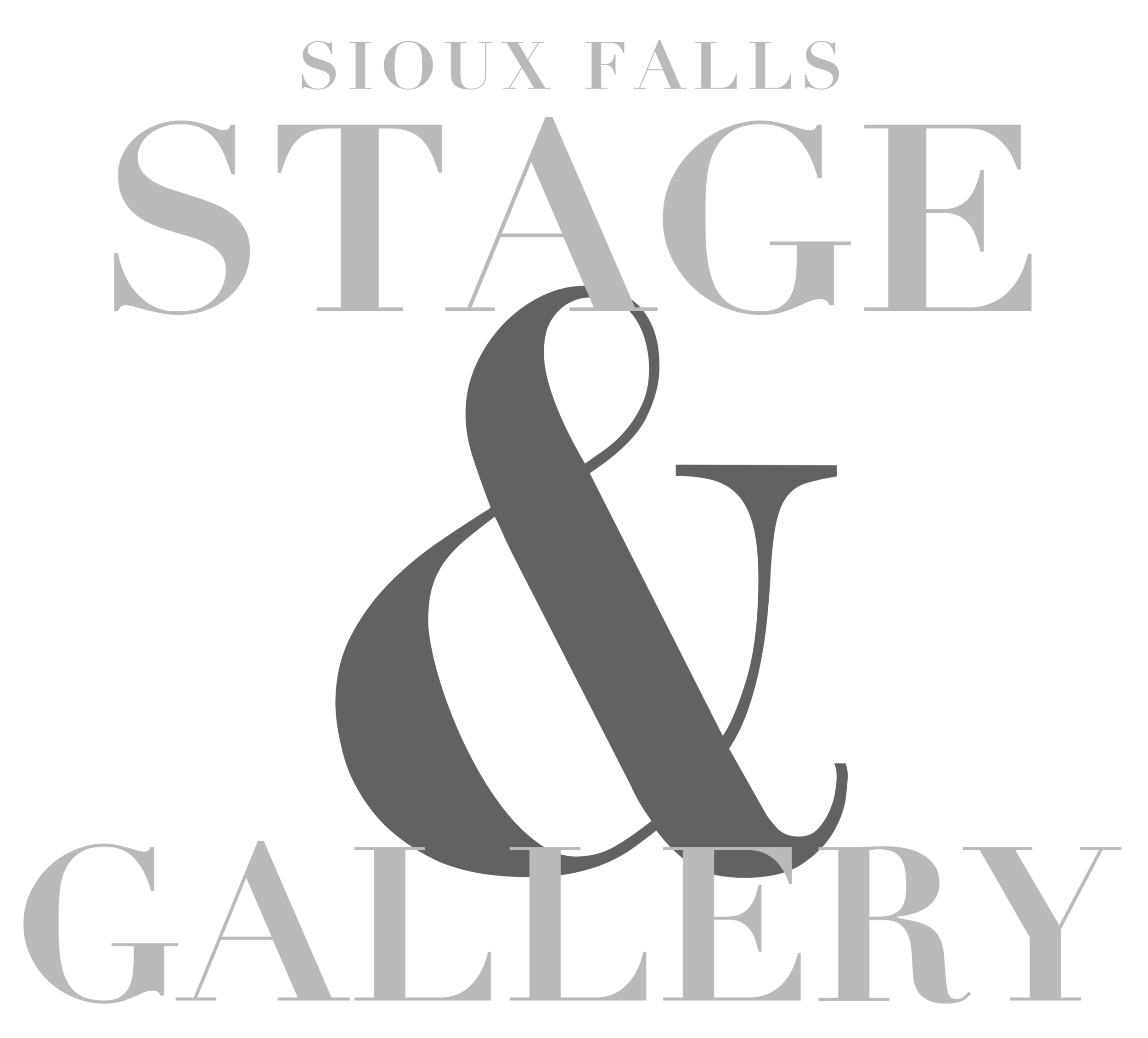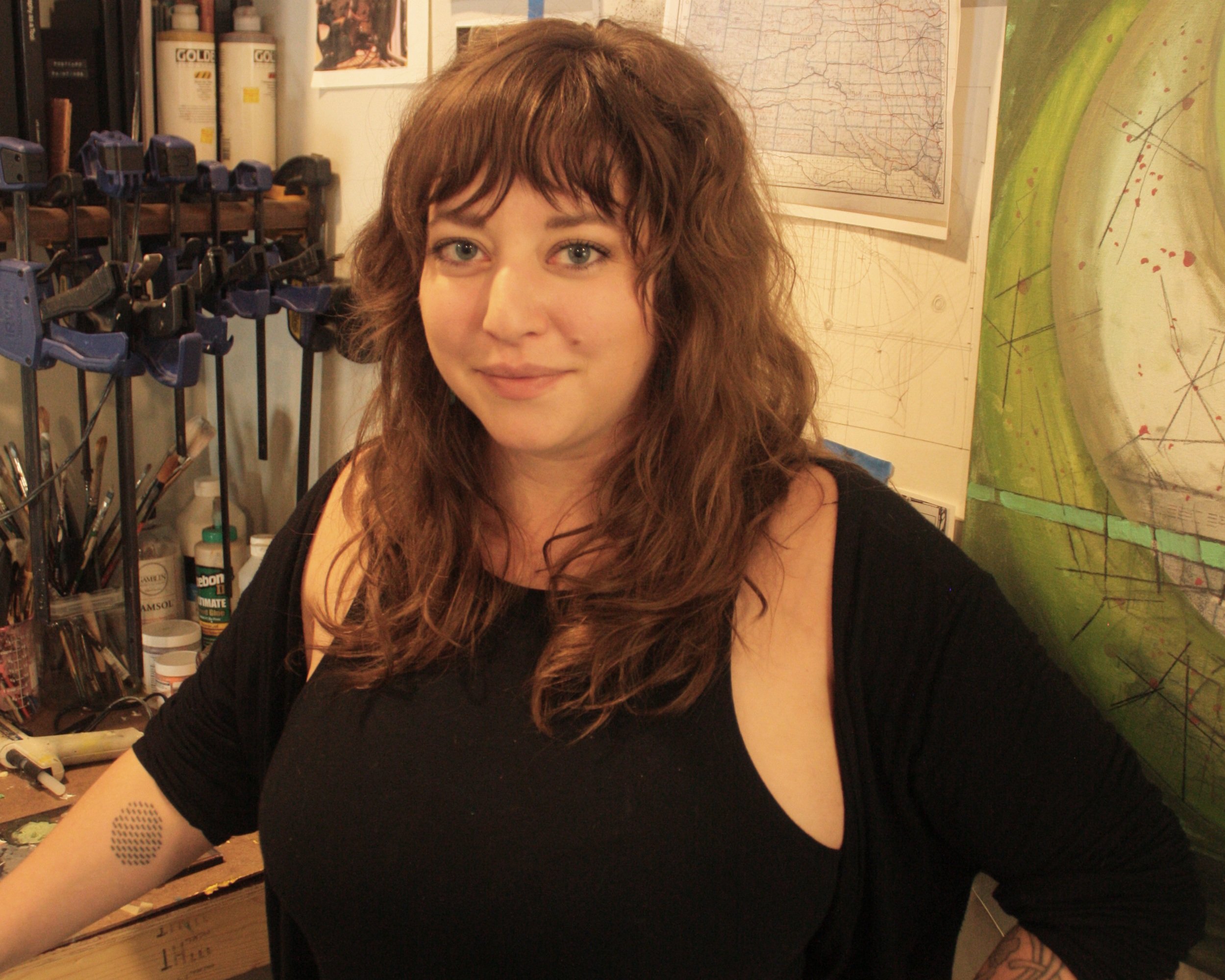Mystery of the Unseen
When you look at the work of Sioux Falls artist Jana Anderson, you’re bound to pick up on the structure at its core—a geometric and almost analytical expression of data that takes on an abstract vessel when she puts brush to canvas. Wrapped up in all of this technique and approach is a marked desire to visualize the unseen—a fascination with what’s too great to fathom and what’s too small to process. We spoke recently with the artist about this very mentality.
What’s your visual-arts origin story?
I definitely found art after high school. I was always kind of into it, but I was always an academic person and focused on school. I went to Hamline University for school and pretty immediately connected with my painting instructor there. I very quickly decided painting was my life. After college I moved back to Sioux Falls for a little bit and then went to grad school in Indiana. I went out to the east coast. I’ve always been making work—it’s never really been about showing or making a ton of money. I just can’t help but make and create things—I’m always thinking about it. Whether or not you’re making work, I think artists have to always be thinking about it.
What is it about painting as a medium that draws you?
I was a traditionally trained oil painter. The color mixing and color theory and what you can do with paint felt very natural to me. The more artists I get to know, the more I get to see that there are sort of personality types for mediums. Painters, I think, tend to be slightly more introverted—they’re good with being alone. Whereas ceramicists and printmakers are so much more communal—sharing supplies and materials and tend to be more outgoing. So there’s something about the process that fits my personality. But I’m definitely experimental and am not just painting—like sculpting and mixed-media practices—but I’m always still looking for something that’s “on the wall” rather than sitting as an object or sculpture.
What’s your process when starting a piece?
My master’s thesis had a lot to do with work that incorporated reflection and mirror fragments where the artwork wouldn’t be fully complete unless someone’s looking at it and changing the color of it based on what you’re wearing, for instance. That is definitely something that comes back to my work all the time. Right now, I’m also using a lot of data—either maps or certain types of celestial star maps or some sort of visual information or research that leads to what the image is going to be based on. It’s not pure abstraction or abstract expressionism—there’s usually something that’s really structured that’s organizing the painting. Most of my paintings start with some kind of information that I’m translating in a visual way.
Do you crave structure in your work?
It’s sort of like the difference between structure versus chaos, in that there’s some sort of integral medium where I need to fit both. I need the structure in order to create chaos within it. I teach at (Dakota State University) and (South Dakota State University) right now—a figure-drawing class and an art-appreciation class. And as an educator, one thing I say all the time is that I really believe you have to learn the rules of art before you know how to break them. You need the foundations of how to draw and how to accurately portray things using perception and to learn about color theory before you can kind of explode from all of that.
How does color play a role in your personal portfolio?
I used to use a lot more fluorescent paint—photographs of space often have hypercolor that is applied to them to be able to better see certain things. And things like MRI and internal imagery have highlighted colors that are really kind of stark. So that was the kind of information I was using to depict paintings, and those colors were really coming into play.
Do the arts run in your family?
There are a lot of creative people in my family, but I don’t think I knew I could be an artist when I was growing up in South Dakota. It wasn’t a thing that I had ever seen modeled before. My dad’s a psychologist, my mom’s a nurse—they were in a career from start to finish. So I just didn’t really know that there was another way—I thought you had to pick a profession and stick to it. But once I figured out what I was really good at and what made sense to me, I had to figure out what being an artist really means. Coming back to Sioux Falls and being an artist here, I think it’s important to be able to show students and other kids growing up here that there is a pathway for the artist weirdos of this world. I think there are a lot of people in my family that could’ve been artists and have that artist spirit but never pursued in that sort of way.
Is there a connection between your parents’ analytical fields and your draw to data-driven work?
Probably—as far as psychology and the medical field, I’m really interested in the internal mind and the internal body, but not from a perspective of wanting to work in that field. I think one thing I figured out at Hamline was that I didn’t have to choose history or economics or medicine—I didn’t have to pick a subject. Because studying art is really studying everything. Through the lens of what artists conceptualize in the context in which they’re working, it’s so all-consuming of everything. It’s a way for me to study a lot of things and being able to filter it through a visual lens.
What response have you gotten from your work?
I think a lot of times they’re seeing haptic versus optic. A sense of touch and texture in the material is definitely something I hope viewers respond to. I think there’s also a bit of a spiritual, sacred geometry that I keep returning to. I’m not working specifically on a whole body of work right now like I have in the past, so there’s not a super exact theme happening right now—but in each individual painting, there are concepts behind the abstraction that I hope people respond to if they take the time to investigate it.
What are some of the core messages behind your work?
One big theme is the mystery of the unseen—the mystery of space and the body. Being able to see deeper and deeper and farther and farther away into space, as well as being able to see smaller and smaller inside the body, as opposed to a perceptual painter, painting from life. My abstract work is coming from a place of trying to visualize the unseen. Sometimes that means the mystery of emotion or the brain, and sometimes it means the mystery of the beyond. I think that’s a really big through-line. As an artist who’s making in this time and place, I have access to this technology that’s allowing us to see things that previously were mysteries or made religious symbols with all sorts of different definitions. I’m a hand-maker, not a tech person, using some of the same materials that have been used for centuries, but I’m responding to the time and place where technology is so influential into how we see and know anything.



